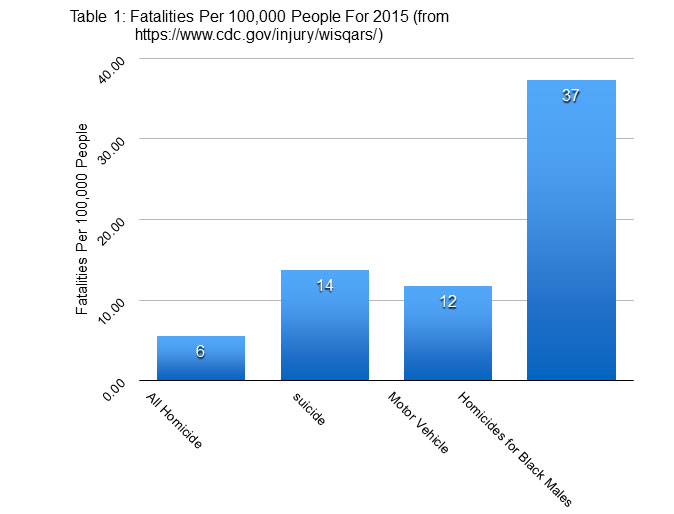
Richard Berk
With all of publicity surrounding crime statistics, it is easy to get a misleading impression about the risks that homicides pose. Recent data from the Centers for Disease Control can provide a factual basis from which to assess the real risks.
Table 1 shows four different kinds of fatality risks. For the United States as a whole, the overall homicide risk for 2015 was 5.54 fatalities per 100,000 people. Imagine a very large football stadium filled with 100,000 fans. It would be as if over the 12 months of 2015, nearly 6 fans among the 100,000 became a homicide victim. Few would dispute that the risk is real and substantial.
But, that homicide risk can be better understood in comparison to other risks. For example, from Table 1, the risk of suicide is nearly 14 fatalities per 100,000 people, far more than twice the risk of homicide. It would be as if over the 12 months of 2015, nearly 14 fans among the 100,000 became a suicide victim. An individual is far more likely to kill himself or herself than to be killed intentionally by someone else. The risk of dying in a motor vehicle accident is almost 12 fatalities per 100,000, close to twice the homicide risk. It would be as if nearly 12 of the 100,000 fans became crash fatalities. An individual is far more likely to be killed accidentally in an automobile accident than to become a homicide victim. There are different kinds of fatalities that come with different risks. Homicide is not at the top — not even close.
There are also enormous differences in risk depending on a person’s background and circumstances. Table 1 shows that the homicide risk for Black males is over 37 fatalities per 100,000 people, which is about 6 times higher than the overall homicide risk. Where you live is a key factor. The very high risks tend to be concentrated in medium to large cities and low income neighborhoods within those cities, especially for homicides committed by guns (https://www.theguardian.com/us-news/ng-interactive/2017/jan/09/special-report-fixing-gun-violence-in-america). In most cities and in most of their neighborhoods, the homicide risk is very low. One important implication is that efforts to reduce homicides must address local, not national, circumstances.

